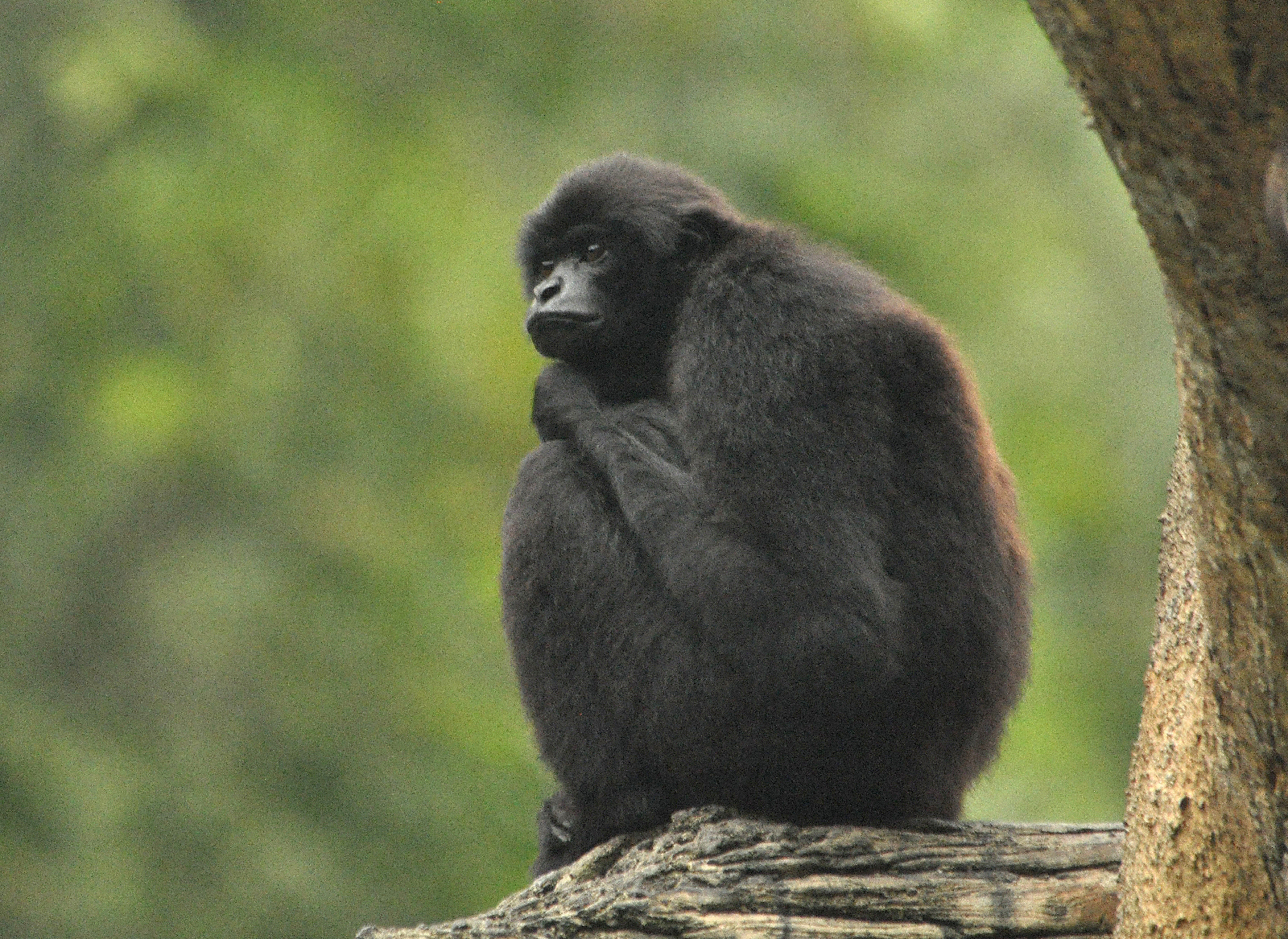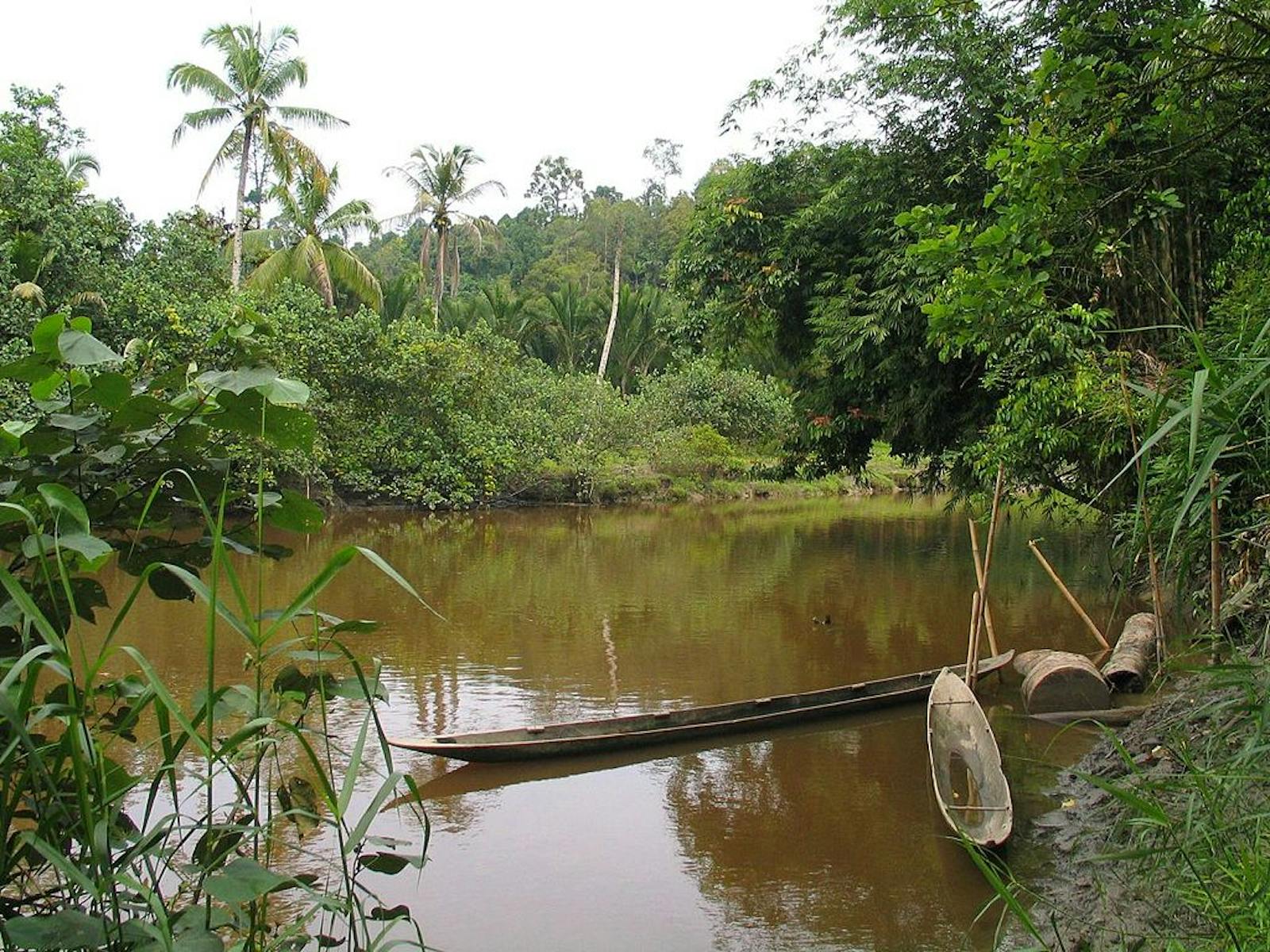Mentawai Islands Rainforests
The ecoregion’s land area is provided in units of 1,000 hectares. The conservation target is the Global Safety Net (GSN1) area for the given ecoregion. The protection level indicates the percentage of the GSN goal that is currently protected on a scale of 0-10. N/A means data is not available at this time.
Bioregion: Peninsular Malaysian & Sumatran Tropical Rainforests (IM18)
Realm: Indomalaya
Subrealm: Malaysia & Western Indonesia
Ecoregion Size (1000 ha):
651
Ecoregion ID:
245
Conservation Target:
88%
Protection Level:
3
States: Indonesia
After over half a million years of isolation, the primates of Mentawai Islands have evolved into five distinct species totally different from their relatives on the nearest mainland, the large Indonesian island of Sumatra. These endemic species are pig-tailed snub-nosed langur—known locally as simakobu and assigned its own genus—Mentawai gibbon, Mentawai langur, Pagai macaque, and Siberut macaque. Except for the last, the other four species are Critically Endangered or Endangered as red-listed by the IUCN.
The Mentawai Islands Rain Forests ecoregion represents the islands 80 to 120 km off the western coast of Sumatra. They consist of Siberut, Sipura, North and South Pagai, and Enggano islands, along with small satellite islands. The islands have high levels of endemism, but surprisingly studies show that mammal communities were more similar to those of Borneo, Java, and even Peninsular Malaysia than to adjacent Sumatra.

The Mentawai gibbon or Kloss gibbon (Hylobates klossii) is the flagship species of the Mentawai Islands Rain Forests ecoregion. Image credit: Klaus Rudloff, CC BY-SA 4.0
The islands drifted away from Sumatra 500,000 years ago, and have since been separated by the deep Mentawai basin. The climate is tropical. An October to March wet season brings 4,500 mm of annual rainfall. Temperatures hover around 30°C year-round.
The vegetation is tropical lowland rainforest, similar to but less diverse than the rainforests of Sumatra. This is to be expected since the flora and fauna on small islands are less biodiverse than on larger landmasses, but they can have higher endemism, especially after long periods of isolation in geological time.
The large forest trees are species of Dipterocarpus and Shorea, with Mallotus, Knema, Santiria, Bhesa, Eugenia, Baccaurea, Dillenia, Artocarpus, and Horsfieldia in the lowlands, and Excoecaria, Diospyros, and Cannarium added to the montane tree community. Abundant lianas and epiphytes add structural habitat to the upper canopy, especially for the arboreal fauna. The forest canopy is usually about 36 m high, with emergent trees growing to over 45 m. The latter are usually dipterocarp species, along with some species of Koompasia, Sindora, and Dialium.
The islands have 17 known endemic mammals. In addition to the primates, other endemics include the Mentawai treeshrew, Sipora flying squirrel, Mentawai long-tailed giant rat, Pagai spiny rat, Mentawai archipelago rat, Mentawi flying squirrel, Siberut flying squirrel, and short-headed leaf-nosed bat. The endemic primates are now under severe threat from forest clearing and hunting. Populations have reduced by 50% over the past two decades.
Hunting primates for food is an important part of the local diet, and the critically endangered sub-nosed langur is considered to be the easiest to hunt and to have the best tasting meat. The forests in north Siberut, still spared from extensive deforestation, offers the best hope for protection of these endemic species. Over 250 bird species are known from these islands. The Mentawai scops-owl is the only known endemic species.
The forests are highly threatened by logging and clearing for oil palm and timber plantations. Siberut was once better forested and was referred to as “one of Indonesia’s most unique cultural and ecological assets” by UNESCO; it is now vulnerable to deforestation. Despite pledges of conservation by President Suharto of Indonesia in the early 1990s, the threats from palm oil plantations have re-emerged.
Currently about 30% of the ecoregion is protected, and 50% of the forest habitat still remains, although it is unclear how much of that are plantations. Because of the high endemism among primates and the heavy dependence on forests by indigenous communities, more intact forests should be included within a system of conservation areas.
Recommended priority conservation actions are to:
- Conduct a strategic assessment of conservation requirements in the ecoregion, based on endemism, ecological linkages, and forest use by Indigenous communities.
- Demarcate these sites as priority conservation areas.
- Engage local communities in conservation through community forestry.
-
-
1. Whitten, T. and Damanik, S.J., 2012. Ecology of Sumatra. Tuttle Publishing.
2. Laumonier, Y., 2012. The vegetation and physiography of Sumatra (Vol. 22). Springer Science & Business Media.
3. Wikramanayake, E, E. Dinerstein, et al. 2002. Terrestrial Ecoregions of the Indo-Pacific: A Conservation Assessment. Island Press. -
Cite this page: Mentawai Islands Rainforests. Ecoregion Snapshots: Descriptive Abstracts of the Terrestrial Ecoregions of the World, 2021. Developed by One Earth and RESOLVE. https://www.oneearth.org/ecoregions/mentawai-islands-rainforests/
-



